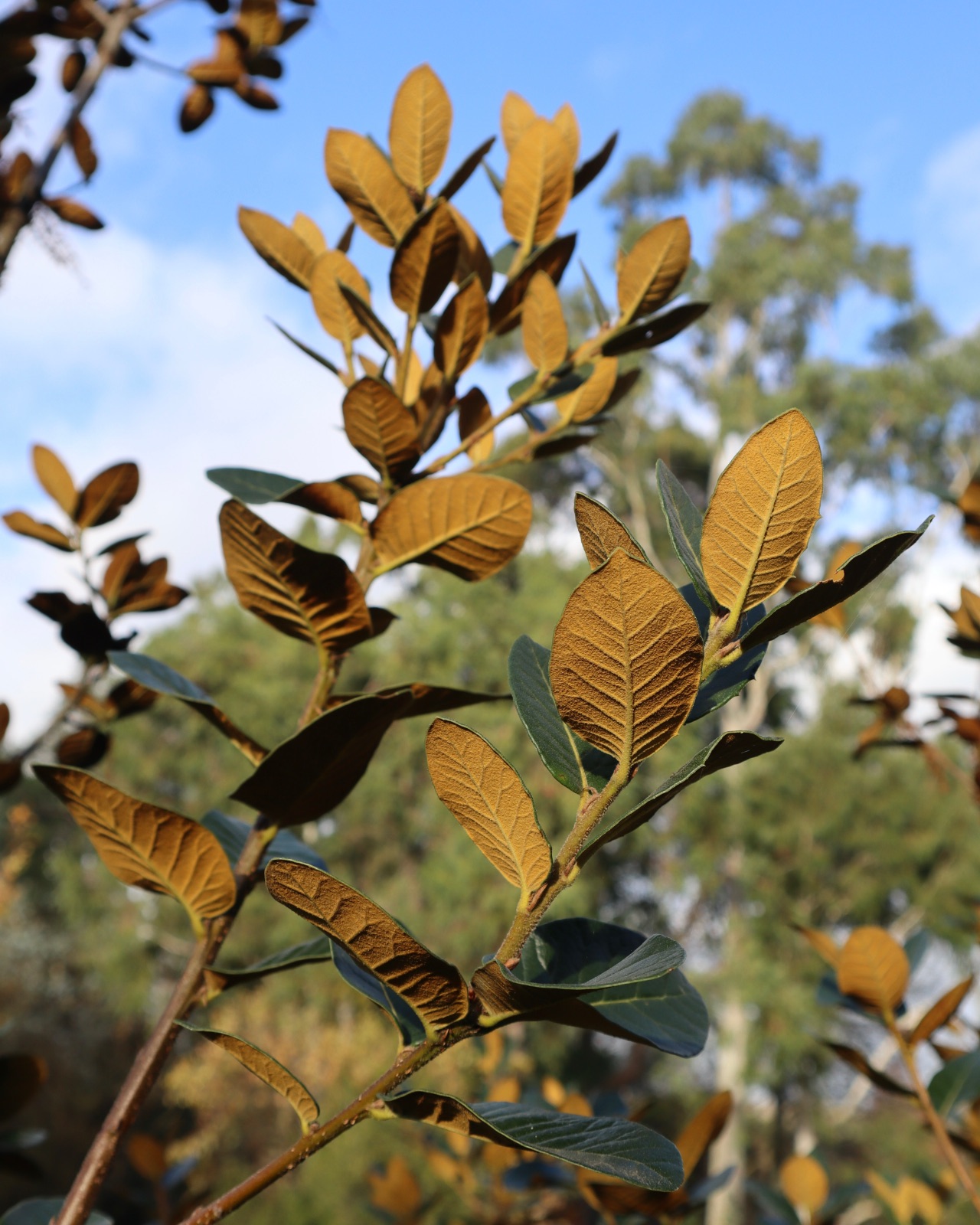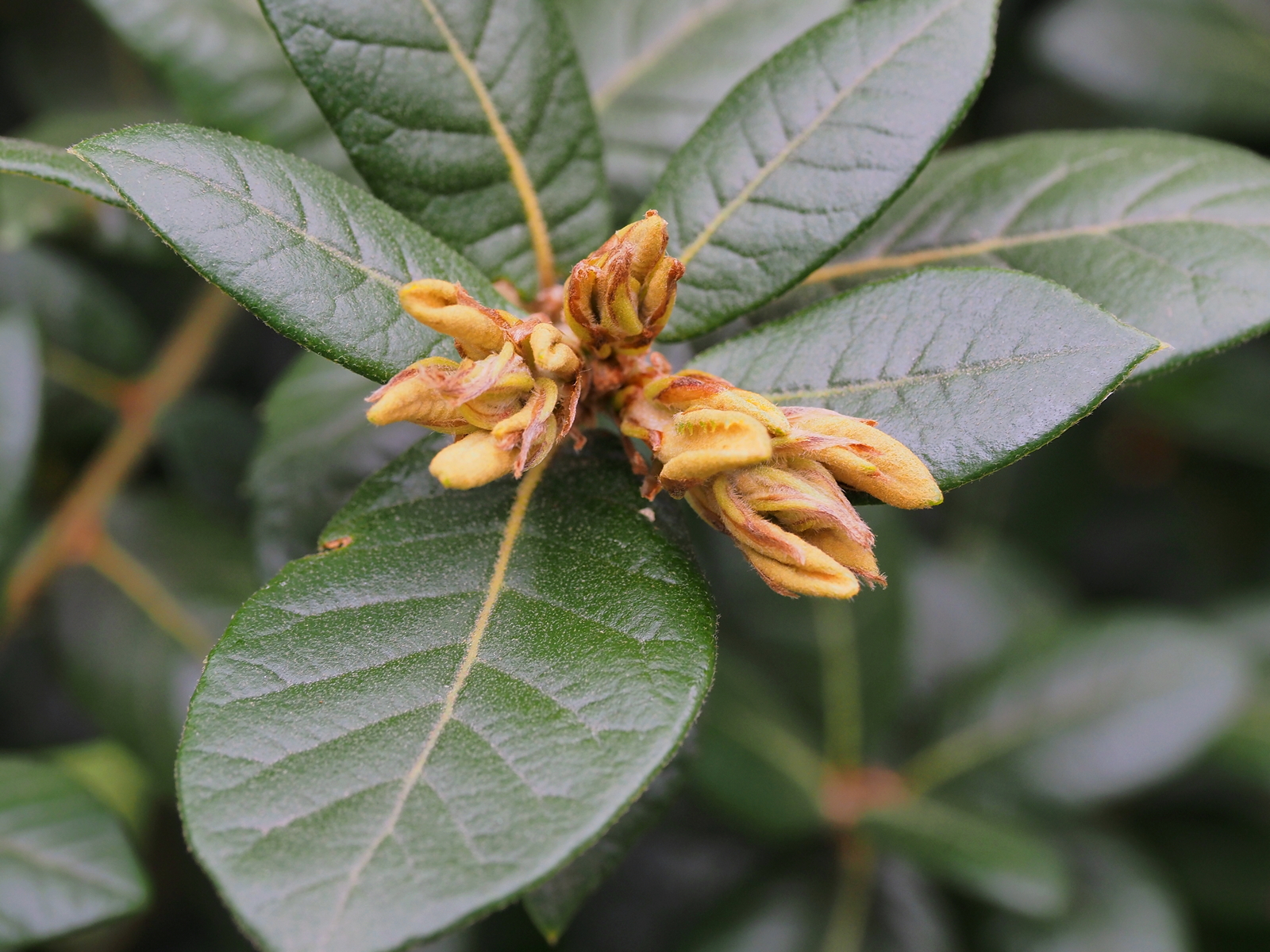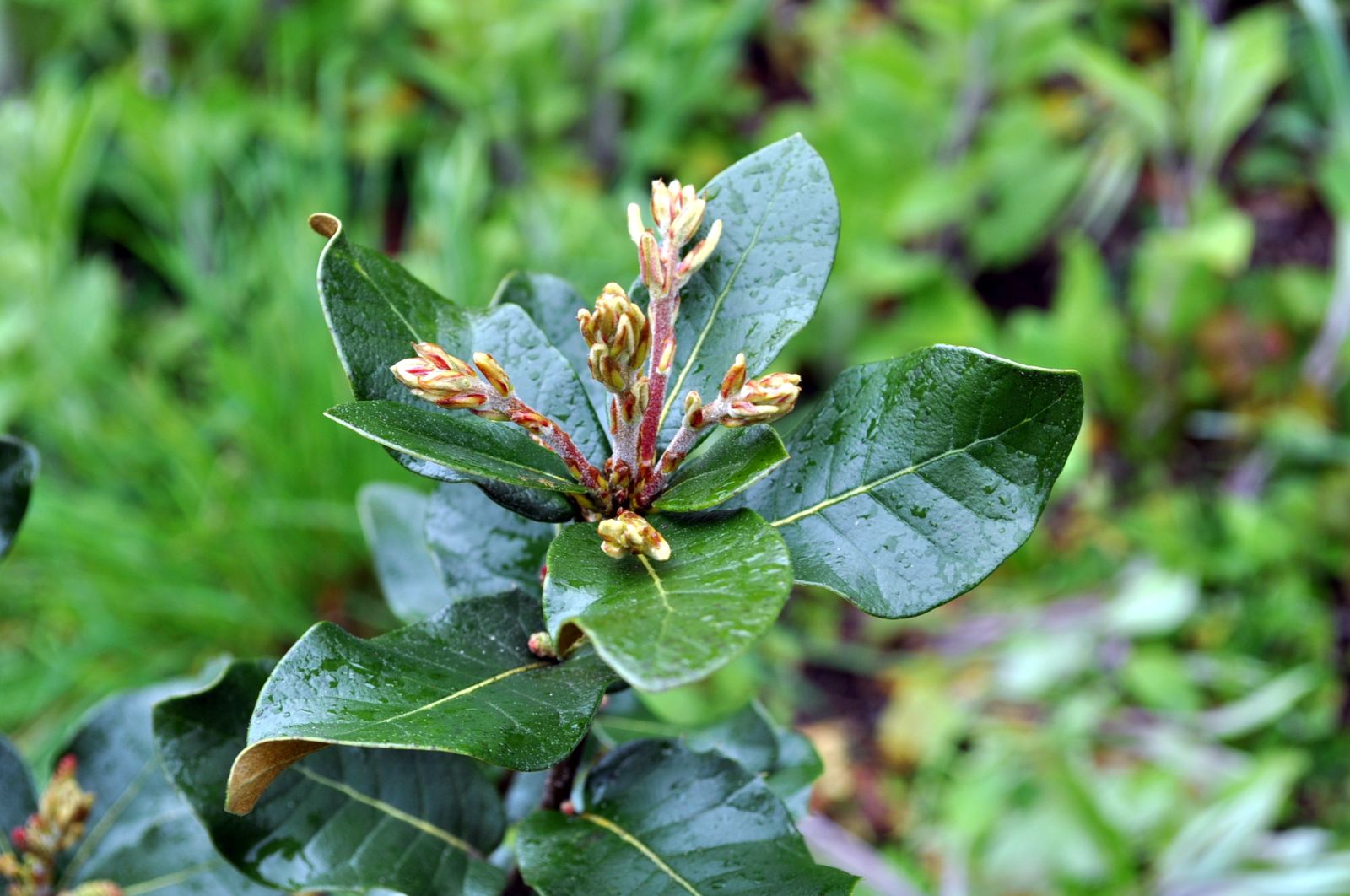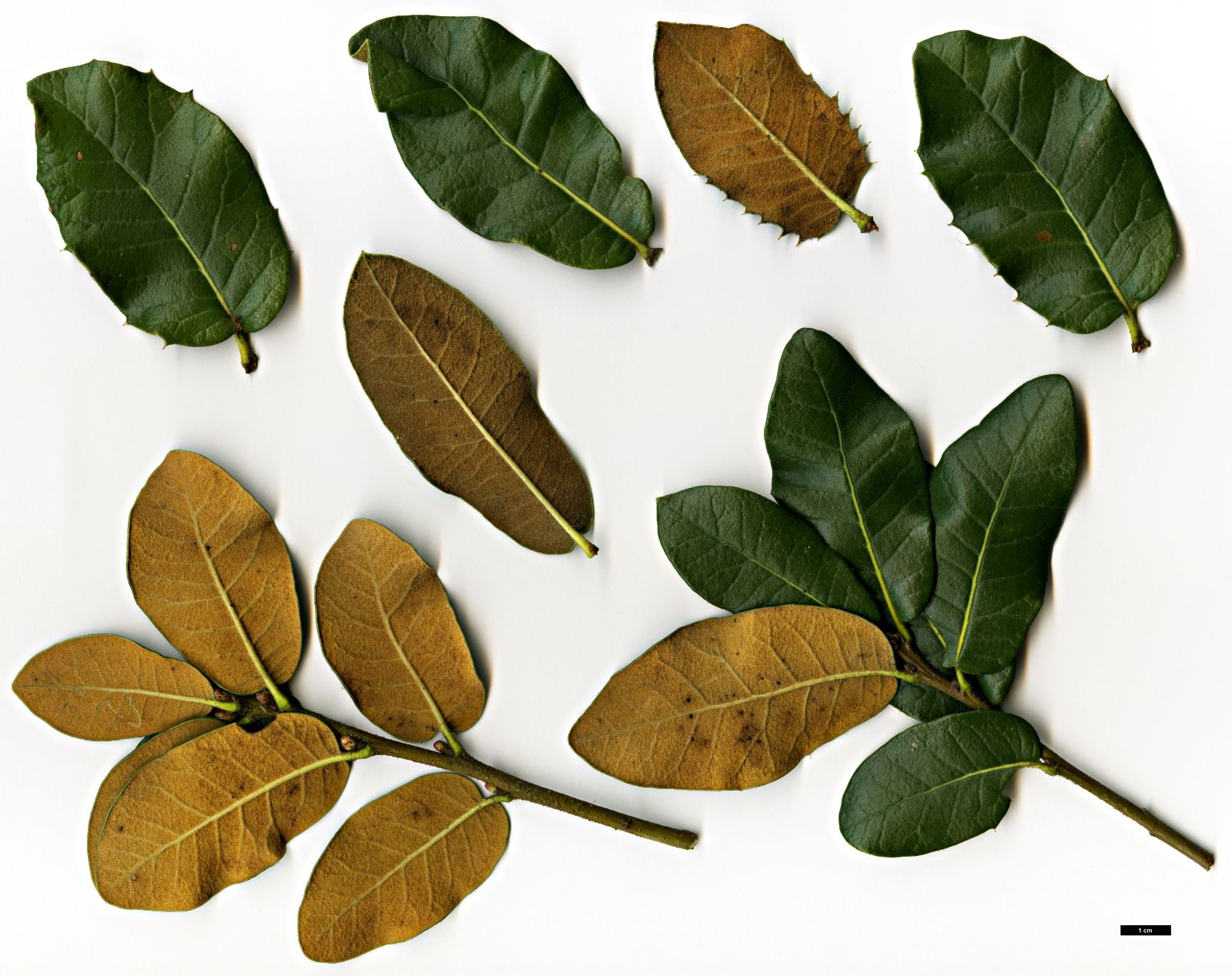Quercus guyavifolia
Sponsor
Kindly sponsored by
The Trees and Shrubs Online Oak Consortium
Credits
Allen Coombes & Roderick Cameron (2021)
Recommended citation
Coombes, A. & Cameron, R. (2021), 'Quercus guyavifolia' from the website Trees and Shrubs Online (treesandshrubsonline.
Genus
- Quercus
- Subgen. Cerris, Sect. Ilex
Synonyms
- Quercus aquifolioides var. rufescens (Franch.) Rehder & E.H. Wilson
- Quercus ilex var. rufescens Franch.
- Quercus pileata Hu & W.C. Cheng
- Quercus semecarpifolia var. rufescens (Franch.) Schottky
Other taxa in genus
- Quercus acerifolia
- Quercus acherdophylla
- Quercus acrodonta
- Quercus acuta
- Quercus acutifolia
- Quercus acutissima
- Quercus afares
- Quercus affinis
- Quercus agrifolia
- Quercus alba
- Quercus aliena
- Quercus alnifolia
- Quercus aquifolioides
- Quercus arizonica
- Quercus arkansana
- Quercus aucheri
- Quercus augustini
- Quercus austrina
- Quercus × auzendei
- Quercus baloot
- Quercus bambusifolia
- Quercus baronii
- Quercus bicolor
- Quercus brantii
- Quercus buckleyi
- Quercus canariensis
- Quercus canbyi
- Quercus candicans
- Quercus castanea
- Quercus castaneifolia
- Quercus cerris
- Quercus chenii
- Quercus chrysolepis
- Quercus coccifera
- Quercus cocciferoides
- Quercus coccinea
- Quercus conspersa
- Quercus crassifolia
- Quercus crassipes
- Quercus delavayi
- Quercus dentata
- Quercus deserticola
- Quercus dolicholepis
- Quercus douglasii
- Quercus dumosa
- Quercus durifolia
- Quercus eduardii
- Quercus ellipsoidalis
- Quercus emoryi
- Quercus engelmannii
- Quercus engleriana
- Quercus euboica
- Quercus eugeniifolia
- Quercus fabri
- Quercus faginea
- Quercus falcata
- Quercus floribunda
- Quercus frainetto
- Quercus franchetii
- Quercus fruticosa
- Quercus fusiformis
- Quercus gambelii
- Quercus garryana
- Quercus geminata
- Quercus georgiana
- Quercus germana
- Quercus gilliana
- Quercus gilva
- Quercus glabrescens
- Quercus glauca
- Quercus graciliformis
- Quercus gravesii
- Quercus griffithii
- Quercus grisea
- Quercus hartwissiana
- Quercus hemisphaerica
- Quercus × hispanica
- Quercus hondae
- Quercus hypargyrea
- Quercus hypoleucoides
- Quercus ilex
- Quercus ilicifolia
- Quercus imbricaria
- Quercus incana
- Quercus infectoria
- Quercus insignis
- Quercus ithaburensis
- Quercus kelloggii
- Quercus × kewensis
- Quercus kiukiangensis
- Quercus laceyi
- Quercus laevis
- Quercus lamellosa
- Quercus lanata
- Quercus lancifolia
- Quercus laurifolia
- Quercus laurina
- Quercus × leana
- Quercus leucotrichophora
- Quercus × libanerris
- Quercus libani
- Quercus lobata
- Quercus lobbii
- Quercus lodicosa
- Quercus longinux
- Quercus longispica
- Quercus look
- Quercus × ludoviciana
- Quercus macranthera
- Quercus macrocalyx
- Quercus macrocarpa
- Quercus macrolepis
- Quercus marilandica
- Quercus mexicana
- Quercus michauxii
- Quercus mongolica
- Quercus monimotricha
- Quercus montana
- Quercus morii
- Quercus muehlenbergii
- Quercus myrsinifolia
- Quercus myrtifolia
- Quercus nigra
- Quercus × numidica
- Quercus oblongifolia
- Quercus obtusata
- Quercus oglethorpensis
- Quercus oxyodon
- Quercus pagoda
- Quercus palmeri
- Quercus palustris
- Quercus pannosa
- Quercus parvula
- Quercus petraea
- Quercus phellos
- Quercus phillyreoides
- Quercus planipocula
- Quercus poilanei
- Quercus polymorpha
- Quercus pontica
- Quercus prinoides
- Quercus pubescens
- Quercus pyrenaica
- Quercus rehderiana
- Quercus reticulata
- Quercus robur
- Quercus rotundifolia
- Quercus rubra
- Quercus rugosa
- Quercus rysophylla
- Quercus sadleriana
- Quercus salicina
- Quercus sartorii
- Quercus × schneideri
- Quercus schottkyana
- Quercus semecarpifolia
- Quercus senescens
- Quercus serrata
- Quercus sessilifolia
- Quercus setulosa
- Quercus shumardii
- Quercus sinuata
- Quercus spinosa
- Quercus stellata
- Quercus stenophylloides
- Quercus suber
- Quercus subspathulata
- Quercus tarokoensis
- Quercus tatakaensis
- Quercus texana
- Quercus tomentella
- Quercus trojana
- Quercus tungmaiensis
- Quercus turbinella
- Quercus × turneri
- Quercus undulata
- Quercus utahensis
- Quercus utilis
- Quercus uxoris
- Quercus variabilis
- Quercus velutina
- Quercus virginiana
- Quercus vulcanica
- Quercus warburgii
- Quercus wislizenii
- Quercus xalapensis
Tree to 15 m tall but in the wild often cut back for fuel and a low shrub. Bark dark grey, with longitudinal ridges. Young shoots with a dense, golden, red or brownish tomentum becoming glabrous with pale lenticels. Leaves evergreen, rigid and leathery, glossy dark green above with up to 12 veins on each side of the midrib, to 9 × 5 cm, rounded to slightly cordate at the base, obtuse to rounded at the apex and edged with spiny teeth or entire, often wavy-edged. Pubescent above when young, becoming glabrous or nearly so, densely and persistently golden brown tomentose beneath, the tomentum grey when the leaves are young. Petiole brown-tomentose, to 8 mm long. Infructescence with a stout peduncle to 6 cm long, cupules solitary or in pairs. Cup to 1.2 × 2 cm, with a splayed undulate margin and grey-brown tomentose scales with a reddish apex. Acorns ovoid to nearly globose, to 2.4 × 1.4 cm, tomentose at the apex and about half enclosed in the cup, ripening the second year. (Coombes & Rix 2012).
Distribution China Guizhou, Sichuan, Yunnan
Habitat Mountainsides often on limestone at 2000–4000 m.
USDA Hardiness Zone 7
RHS Hardiness Rating H3
Conservation status Least concern (LC)
Introduced by Keith Rushforth (KR 2823) in 1993 from a 15 m tree in the Zhongdian Gorge, Yunnan. A tree planted in his collection in Devon was about 4.5 m tall in 2012 and is probably the largest in cultivation. This tree has produced acorns, and seedlings from it are at Tregrehan.
Seed was later sent from Yunnan to the Sir Harold Hillier Gardens, UK, in 2003; one plant there was 2.3 m in 2020 (B. Clarke pers. comm.). Plants from the same collection are 2 m tall and across at Thenford, Northamptonshire (D. Webster pers. comm. 2020), 3–4 m at Tregrehan, Cornwall (T. Hudson pers. comm. 2020) and more than 7 m × 7.5 cm at Chevithorne Barton, Devon (J. MacEwen pers. comm. 2020). There are also plants at Arboretum Robert Lenoir, Belgium and Arboretum des Pouyouleix, France from Tom Hudson. Two plants in the latter garden were 3 m tall in 2020 (B. Chassé pers. comm.). According to Eike Jablonski (pers. comm. 2020) this species grows well on alkaline soil over limestone at Ettelbruck, Luxembourg where it flowers freely but does not set acorns. Two plants grown from seed collected at about 3410 m on Luoji Shan, Sichuan in 1990 (H&M 1471) are at Sonoma Botanical Garden, USA (Quarryhill Botanical Garden 2001) and one plant of the same collection is at the Howick Arboretum in Northumberand, UK (and was initially identified as Q. monimotricha). The parent plant was a shrub to 2.5 m with spiny leaves to 4.5 × 3.5 cm, mustard-yellow beneath.
Although this species is rare in cultivation it is one of the most attractive of the golden oaks in the colour of the underside of its leaves.
The specific epithet has been spelt in different ways, but the original spelling is retained here as it is based on what was regarded as a common name for the guava (guyava) and not on the genus Guajava (= Psidium).








